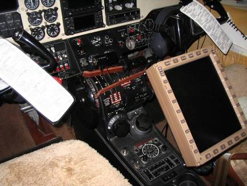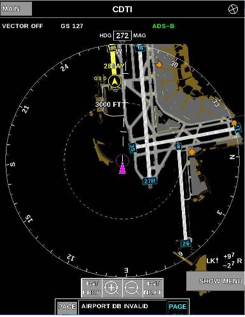BY CYRO STONE
Director of Business Development for ACSS
We are all aware of the extraordinary advances in air transportation safety for aircraft in flight. Collision avoidance technology has all but eliminated mid-air disasters. But can these capabilities be applied to aircraft taxiing on the ground?
The simple answer is yes.
Air transportation is constantly evolving, but the global air transport industry is in the process of implementing “NextGen” technologies that will redesign the National Airspace (NAS) with better tracking and management of all phases of flight – including a better aircraft taxiing system.
Automatic Dependent Surveillance-Broadcast (ADS-B) is the cornerstone technology of the Federal Aviation Administration’s (FAA) NextGen and Europe’s Single European Sky Air Traffic Management, also known as SESAR. Aviation authorities around the world have mandated that transport aircraft upgrade their transponders to broadcast more accurate and robust information using ADS-B, which includes a plane’s speed, position, intent and flight identification.
Innovators like L-3 have worked closely with airlines over the past 10 years to develop and certify both the mandated ‘ADS-B Out’ capabilities, as well as ‘ADS-B In’ applications.
It is the ADS-B In functions that provide the most obvious operational benefits. L-3 has a portfolio of ADS-B In solutions called SafeRoute® that includes a host of cockpit applications designed to improve safety and efficiency on the ground and in the air. One module – called Surface Area Movement Management (SAMM) – renders an airport moving map with a display of own-ship relative to other aircraft traffic. SAMM delivers improved situational awareness to the pilot to reduce runway incursion incidents.
Demonstrated Technology
In 2008, the FAA’s Surveillance and Broadcast Systems (SBS) office sponsored a program to accelerate the development of a surface indicating and alerting (SURF IA) system, which would build on the situational awareness of SafeRoute’s SAMM application by adding visual and aural alerts to the pilot. The indicating and alerting would be triggered either when an aircraft taxied too close to another aircraft, tried to cross an active runway or tried to land on an occupied runway.
US Airways A330 Installed with L-3’s SafeRoute-SURF IA System

L-3 partnered with US Airways and a host of other collaborators on the FAA project. The demonstration featured a US Airways A330 and a King Air C90 operated by L-3. Both aircraft installed the L-3 SURF IA system and participated in a series of demonstration flights in November 2009 at Philadelphia International Airport.
The SURF IA function was based on an aviation industry-defined concept identified as “enhanced traffic awareness on the airport surface with indications and alerts.” L-3 developed its SURF IA by adding real-time indications and alerts to its certified and operational SafeRoute-SAMM function. On the display, aircraft and vehicles transmitting ADS-B Out data are displayed as traffic icons relative to an aircraft’s own-ship position. When an aircraft is at or near an airport, airport elements such as runways, taxiways, buildings and hold lines are displayed.

L-3 King Air C90 with SafeRoute-SURF IA
The flight deck “indications” are intended to give flight crews better awareness of what’s happening around them by identifying the runway traffic status under normal operational conditions in a typical airport environment. The flight deck “alerts” are designed to attract the immediate attention of the flight crew and notify crewmembers that an abnormal traffic condition exists and that they need to be aware and take evasive action.
Certified products like SafeRoute-SAMM provide an additional layer of safety and situational awareness by displaying ground traffic relative to own-ship position. SAMM prevents most of today’s runway incursions. In addition, there are other certified SafeRoute ADS-B In applications that focus on improved operational efficiencies.

CDTI Display of SafeRoute-SURF IA Traffic Caution Alert
Why Wait?
L-3 applauds the FAA’s commitment to local and NAS-wide implementation of ADS-B In functions. Applications such as SAMM, Interval Management (IM) and CDTI (Cockpit Display of Traffic Information) Assisted Visual Separation (CAVS) are certified and operational on revenue service aircraft today. The SURF IA demonstrations prove that surface indicating and alerting is a technology that is ready to move forward. L-3 is committed to assisting the FAA in moving this technology forward and to help bring an even higher level of safety to our runways.
To see a video of the FAA’s SURF IA demonstration, click here.
Cyro Stone is director of Business Development for ACSS, a joint venture of L-3 and Thales. He is an expert in flight safety surveillance, including collision avoidance systems, transponders and ADS-B technologies. Prior to his current assignment, Stone was director of ACSS’s ADS-B product line and served as the company’s chief technologist. He has over 25 years of experience in business leadership, program management, marketing and engineering and holds a Bachelor of Science degree in engineering from Embry-Riddle Aeronautical University and an Executive MBA from Thunderbird School of Global Management.




